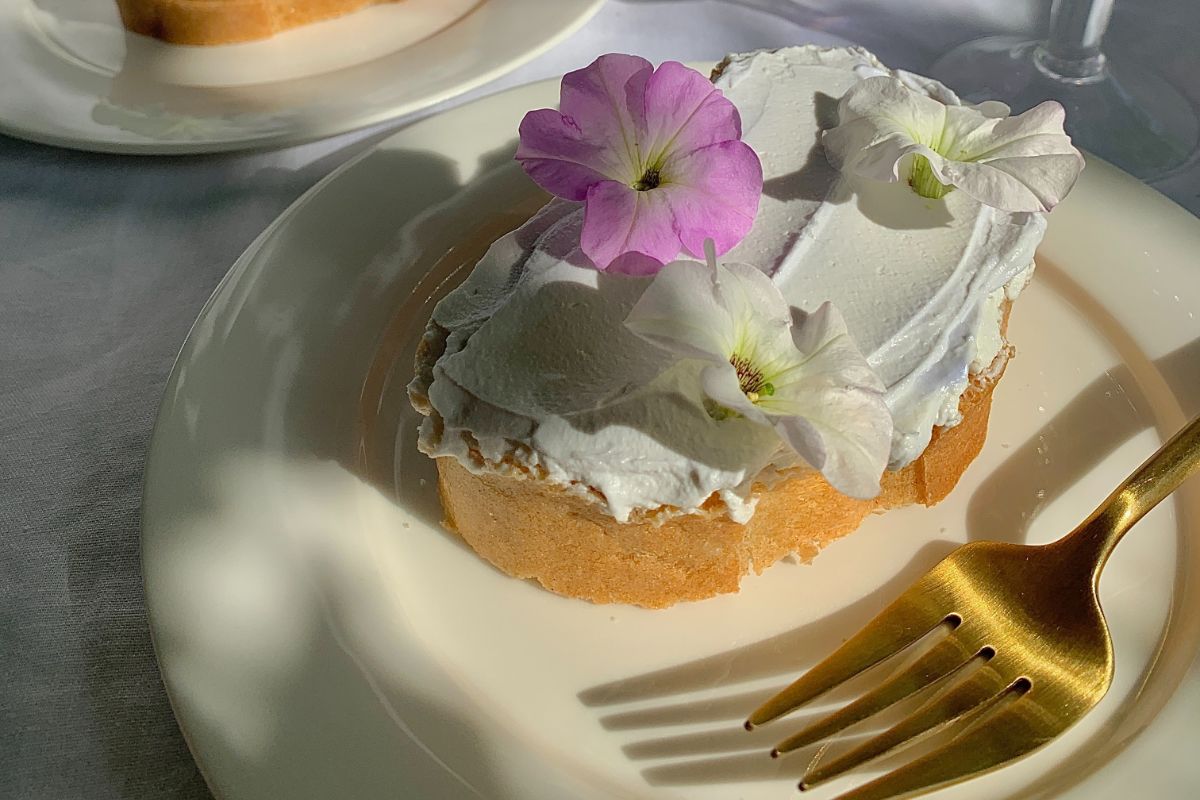
Along with the radishes and chives in your vegetable garden and flowering fruit trees like apples and artichokes, your flower beds can be a delicious edible resource.
This guide will walk you through four courses of the best edible flowers, along with links to suggested recipes for each.
A couple of notes on edible landscaping: When harvesting from your garden, be sure you:
- Know exactly what you’re eating. Some edible flowers have not-so-edible lookalikes that can be dangerous if ingested
- Know whether you have any floral allergies.
- Avoid pesticide or herbicide use while growing flowers.
Your menu options in edible flowers:
Appetizers
Getting hungry but not ready for a full meal? These flowers are perfect to pique your interest or tide over your hunger until the rest of your flowery food is ready.
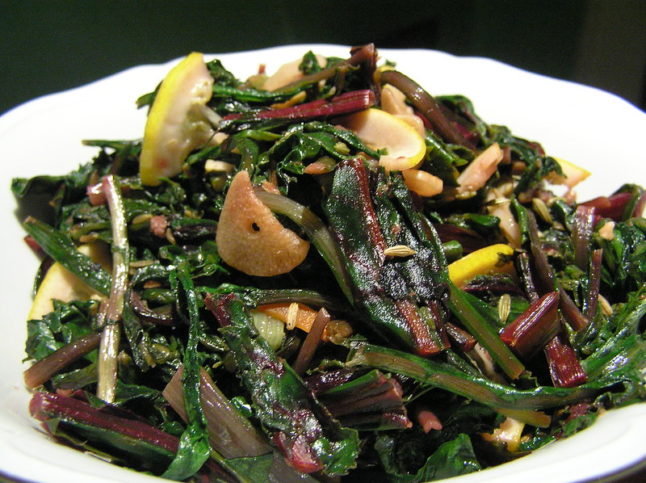
Photo credit: Laurel F / Flickr / CC BY-SA 2.0
Dandelion
Some gardeners may consider dandelions to be a weed, but if you’ve made your peace with their presence this humble plant has all sorts of edible uses. Before you’ve picked the flowers to make wishes or dandelion wine, harvest the leaves for a peppery, nutrient-packed salad green that you can substitute for arugula.
USDA Hardiness Zones: 3-10
Sun: At least 6 hours of sun per day
Soil: rich, well-drained soil
Water needs: Keep soil moist, but not soggy
Bloom time: Continuously, but particularly May-June
Mature size: 2-6 inches tall
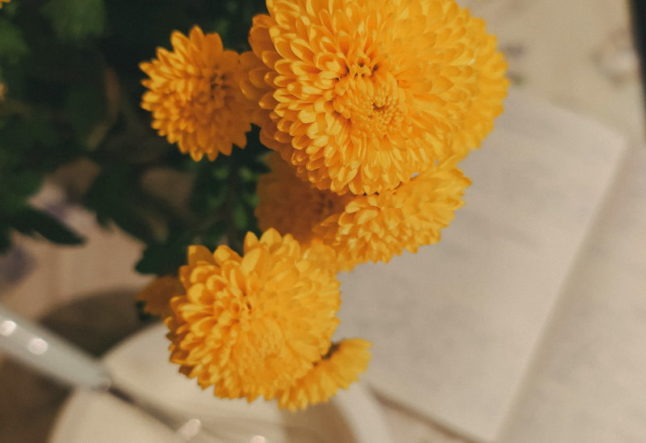
Photo credit: Kate Graur / Pexels
Chrysanthemum
Many chrysanthemum varieties are edible, and each comes with different flavors and recipes. The greens of the garland chrysanthemum are common to many varieties of Asian cuisine, and its tangy flavor lends itself well to stir fries and salads.
Other chrysanthemum varieties are perfect as soup and salad garnishes, since the flower petals add a peppery taste. The flowers can also be brewed into chrysanthemum tea or wine.
USDA Hardiness Zones: 5-9
Sun: At least 6 hours of sun per day, partial shade in warmer zones
Soil: Well-drained, sandy or loamy soil
Water needs: 1 inch per week early in the season, increasing gradually to 6-8 inches per week
Bloom time: Early bloomers start in July, other varieties September-October
Mature size: 2 to 3 feet
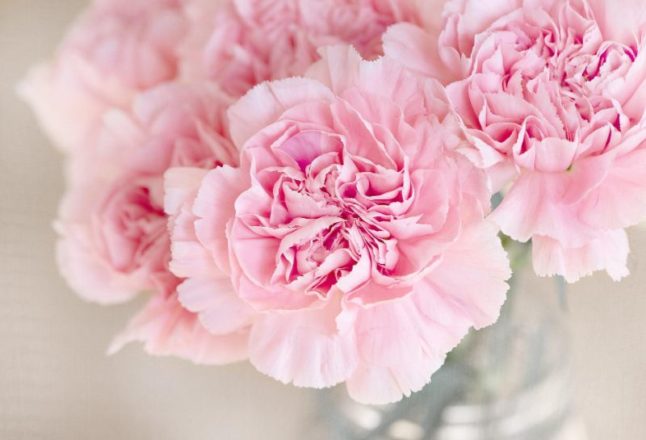
Photo credit: Pezibear | Pixabay
Carnation
Carnations are likely native to the Mediterranean, but their exact native range is unknown due to extensive over the last 2,000 years. This makes them trusty, adaptable plants that can withstand a variety of conditions and temperatures. The distinctive sweet-and-spicy flavor of carnations makes them a tasty addition to salads and rice dishes, as well as a great garnish for soups.
USDA Hardiness Zones: 5-9
Sun: 4-6 hours of sun per day
Soil: Well-draining, fertile soil
Water needs: Carnations are fairly drought tolerant, but water them once per week.
Bloom time: May-August
Mature size: 12-18 inches
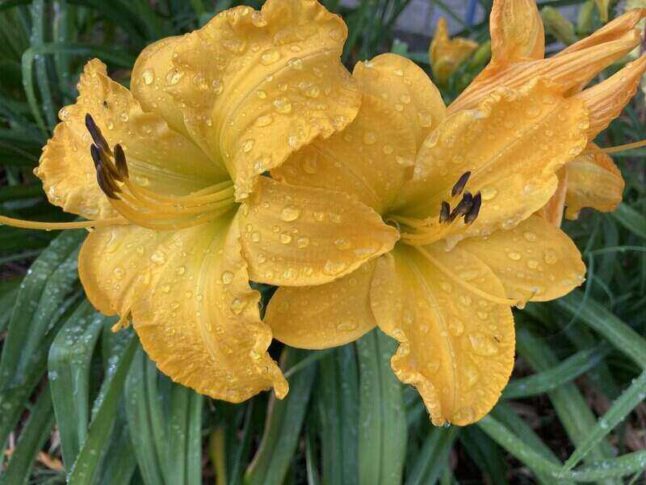
Photo credit: Jeff Herman / LawnStarter
Daylily
Daylilies are popular in Chinese cuisine, and can be prepared in all sorts of ways. The unopened flower buds and tubers can be sautéed with butter for a tasty veggie side dish, or mix dried flowers into a warm batch of hot and sour soup for a thickening agent.
These flowers are so versatile and delicious that in Chinese the dried buds are known as gum jum choi, or “golden needles!”
USDA Hardiness Zones: 4-9
Sun: Full sun or partial shade, 4-6 hours of sun per day for best results
Soil: Adaptable to many conditions, but moist, well-drained soil high in organic matter produces the best results
Water needs: About an inch of water per week
Bloom time: Most bloom in June or July, but mixing varieties can create blooms from May through September
Mature size: 8 inches to 5 feet
Main Courses
If you’re looking for some filling flower food, there are plenty of options right in your backyard. Despite their delicate appearance, edible flowers can be used in hearty dishes perfect for your next garden party.
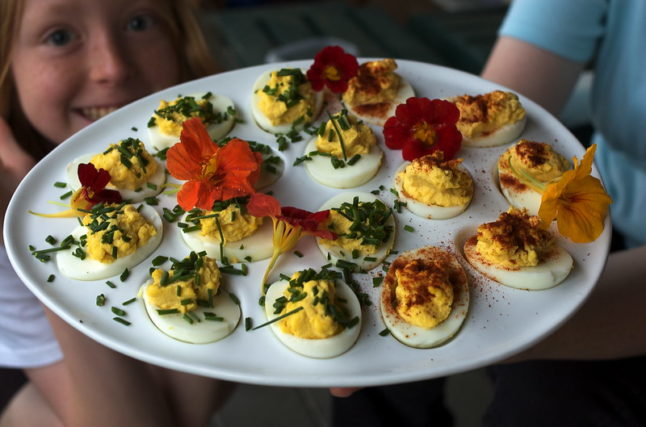
Photo credit: Tim Pierce / Flickr / CC BY-SA 2.0
Nasturtium
Nasturtium’s gorgeous colors and edible intrigue make it a popular choice for gardening with kids, and it’s an excellent companion for more familiar culinary crops like broccoli, cabbage, pumpkin, and kale.
Nasturtium has a peppery flavor similar to mustard, and the flowers make an excellent garnish for soups and salads, while its seedpods can be pickled and substituted for capers in sandwiches, bagels, and more.
USDA Hardiness Zones: annuals 4-8, perennials 9-11
Sun: Full sun is best – will grow in partial shade but not bloom as well
Soil: Neutral, well-draining soil
Water needs: Water 6 inches deep once or twice weekly, or when the top inch of soil begins to dry
Bloom time: May-September
Mature size: 1-10 feet tall
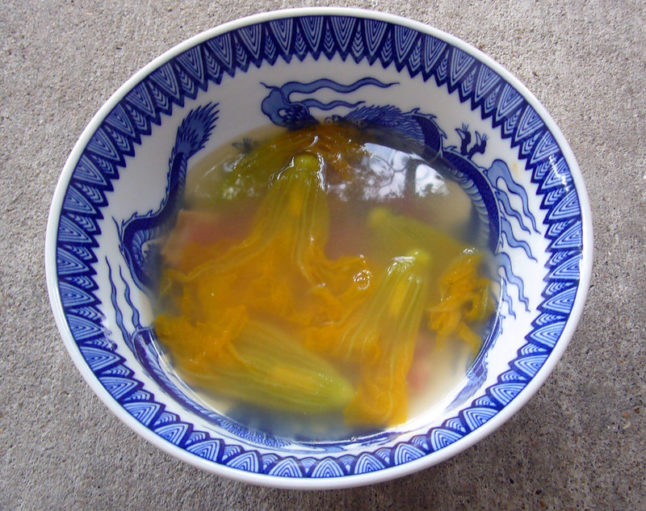
Photo credit: Kent Wang / Flickr / CC BY-SA 2.0
Squash blossoms/zucchini blossoms
Sure, most species of garden squash are edible, but so are zucchini flowers. Squash blossoms stuffed with cheese or pan fried on their own are a traditional Italian dish, and they can also be made into a flowery frittata.
USDA Hardiness Zones: 3-9
Sun: Full sun
Soil: Moist soil high in organic matter
Water needs: Water deeply once a week
Bloom time: Blossoms only bloom for about one day before falling off or closing to turn to squash, 42-52 days after planting
Mature size: 2-3.5 feet
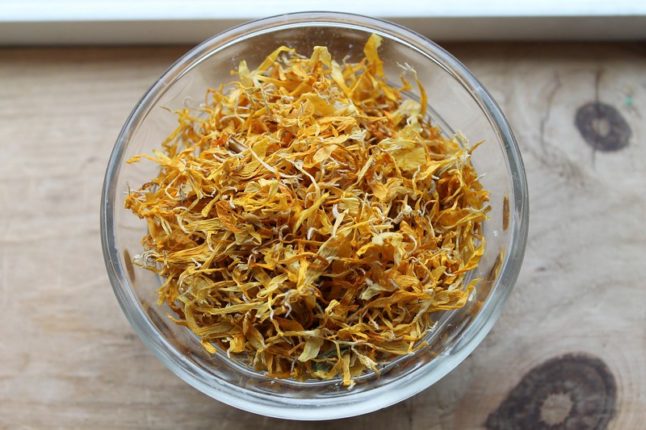
Photo credit: Nina Nelson / Flickr / CC BY-SA 2.0
Calendula/Pot Marigold
Commonly known as “poor man’s saffron,” the citrusy taste of calendula petals makes them a great addition to soups, stir-frys, and egg dishes, while the leaves are often incorporated into salads.
The flowers of calendula also are a traditional colorant for yellow cheeses. The flowers also are the star of the show in this calendula paella recipe!
Note: Though calendula is known as the pot marigold, it shouldn’t be confused with marigolds in the Tagetes family, which are dangerous to eat.
USDA Hardiness Zones: Perennial in 9-11, typically grown as an annual
Sun: Full sun to partial shade
Soil: Well-drained soil rich in organic matter
Water needs: Give calendulas 1-1.5 inches of water per week in hot weather – this plant is fairly drought tolerant, but regular watering will encourage more blooms.
Bloom time: May-early fall; will rebloom constantly if regularly deadheaded
Mature size: 1-2 feet tall
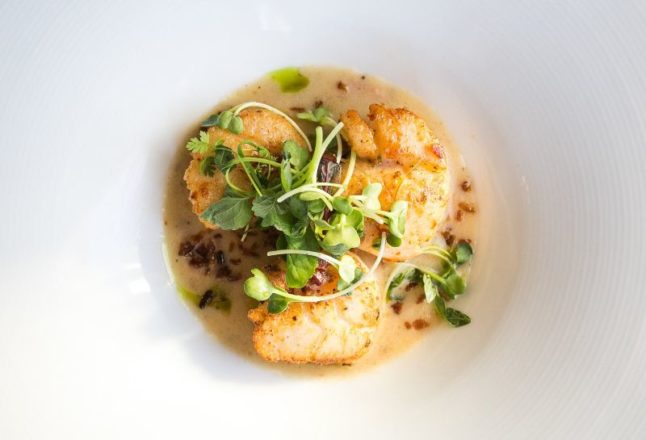
City Foodsters / Flickr / CC BY-SA 2.0
Lavender
You may have already known that lavender is edible thanks to its common presence in teas and flavor syrups, but this herb is also used as a springtime seasoning for fatty meats like lamb, chicken, or salmon, as well as roasted veggies.
Lavender also is a great companion plant for other edibles, from roses to cabbage.
USDA Hardiness Zones: 5-9
Sun: full sun
Soil: Dry, well-draining soil low in organic matter
Water needs: Once established lavender is drought-tolerant, and prone to root rot and fungi if overwatered.
Bloom time: May-June
Mature size: 2-3 feet tall
Desserts
Ready to wrap up your flower feast? Don’t forget dessert. These edible flowers are sweet as can be, whether candied, baked into cakes, or made into ice cream.
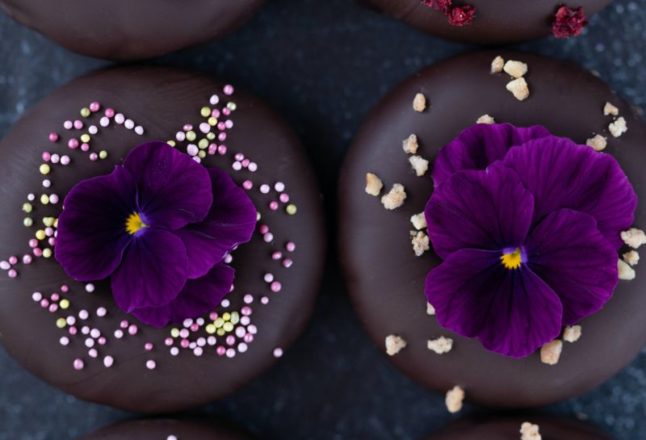
Photo credit: Valeria Boltneva / Pexels
Violas (Pansies and Violets)
Both pansies and violets are edible members of the viola family, and their honey-like taste lends another layer of sweet flavor to delicate desserts like shortbread, truffles, and lollipops. These flowers are known to attract plenty of butterflies and pollinators, too.
USDA Hardiness Zones: 3-8
Sun: Full sun to partial shade, depending on variety
Soil: Rich, moist, well-draining soil
Water needs: Water regularly, but allow the soil to dry out between waterings
Bloom time: Spring or fall (or both!)
Mature size: 4-10 inches tall

Photo credit: foshie / Flickr / CC BY-SA 2.0
Lilac
Lovely lilac shrubs are members of the olive family, and their fragrant flowers make for delicious additions to cakes and pastries. You also can make lilac honey by infusing flowers in honey for 6 weeks.
USDA Hardiness Zones: 3-7
Sun: Full sun
Soil: Fertile, humus-rich, well-drained soil
Water needs: Deep, infrequent watering every 10-14 days
Bloom time: April-June
Mature size: 12-15 feet tall
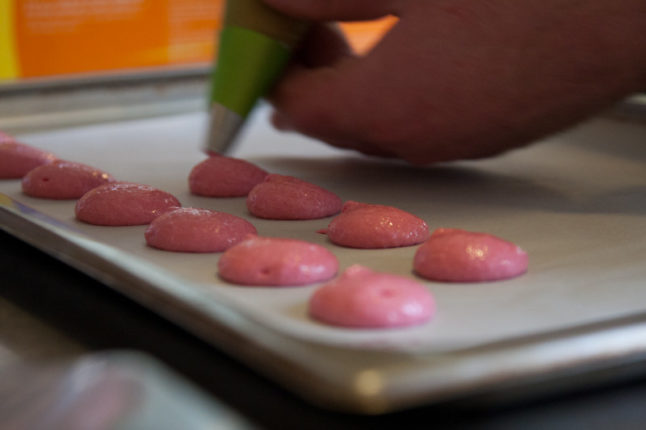
Photo credit: Pauline Mak / Flickr / CC BY-SA 2.0
Geranium
Geraniums are easy to grow and smell delightful, making them a favorite for gardeners looking to add color and fragrance. When the flowers and leaves are consumed, the flavor can range from minty to lemony. Geraniums are delectable in cakes, drinks, and especially geranium jelly!
USDA Hardiness Zones: Perennial in 9-11, annual in most other climates
Sun: Full sun, or light shade for ivy geranium
Soil: Loose soil with plenty of organic matter
Water needs: Water weekly when the top inch of soil is dry. If perennial, they can typically survive on rainwater once established.
Bloom time: Depending on variety, but typically May-June
Mature size: 5-36 inches tall
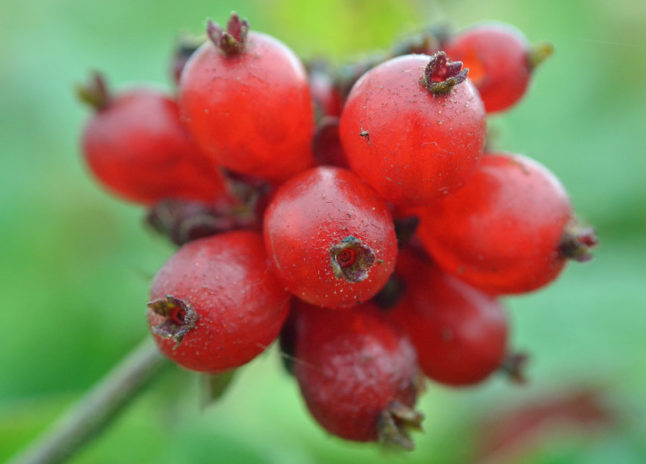
Photo credit: Conall / Flickr / CC BY-SA 2.0
Honeysuckle
Honeysuckles can grow on woody shrubs or climbing vines. Along with hollyhocks, they’re a staple of cottage gardens, as well as a romantic pair with roses.
Honeysuckle’s delicious nectar can be sipped straight from the flower, leading to the flower’s name. For a more formal recipe, harvest the flowers to make a delicately floral honeysuckle ice cream.
USDA Hardiness Zones: 5-9
Sun: Honeysuckles prefer full sun, but can tolerate some shade
Soil: Organically-rich, well-drained soil
Water needs: Water deeply once a week in the summer unless rain is plentiful, and sparingly in winter
Bloom time: June-September
Mature size: 10-30 feet
Beverages
From hot tea to ice-cold cocktails, take a sip of these gorgeous flowers with our selection of delicious drinks.
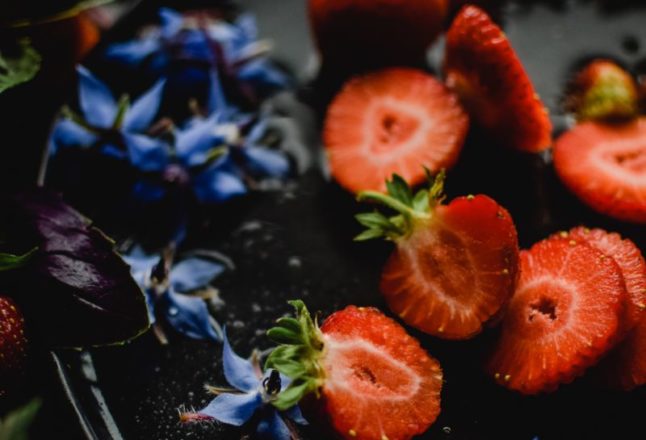
Photo credit: Eva Elijas / Pexels
Borage
Also known as starflower, borage is originally native to the Mediterranean and has a dazzling array of edible uses. All parts of the plant can be consumed except for the roots, and the unique blue flowers can be candied or used as a garnish to add a pop of color to any dish.
Our favorite way to prepare borage lends its cucumber-like taste to spruce up refreshing lemonades and spring cocktails. It’s particularly well-suited for pairing with gin, so add it to a garden gimlet or a classic G&T.
USDA Hardiness Zones: 2-11
Sun: Full sun or partial shade
Soil: Borage can thrive in a variety of soils, but prefers moist, well-drained soil
Water needs: Water borage at least every few days while it’s getting established, but once it has taken root you can let the soil dry out between waterings.
Bloom time: June-October
Mature size: Around 2 feet tall
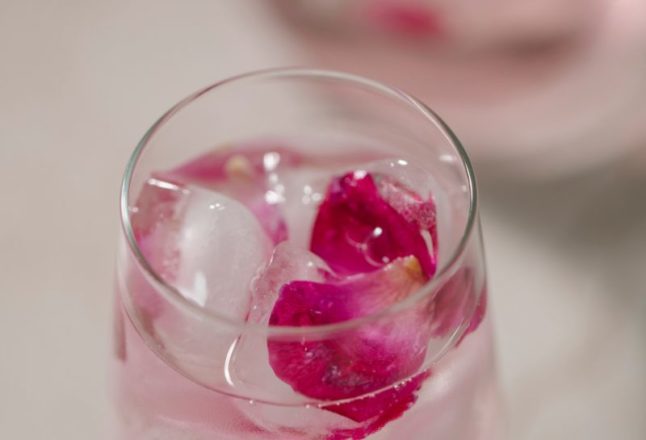
Photo credit: Charlotte May / Pexels
Roses
Those gorgeous roses blooming on your bushes are tasty, too! Rose water is a common beverage in Middle Eastern, Persian, and Indian cuisine, where it’s often paired with sweet side dishes like baklava or used as an ingredient in other recipes.
This beverage is simple to make by steeping rinsed rose petals in distilled water for around half an hour or when the petals lose color. If you make too much to drink, you can also use it as a facial toner or mist.
USDA Hardiness Zones: 3-10
Sun: At least 4 hours of direct sunlight is recommended
Soil: Loamy, well-drained soil
Water needs: Water newly-planted roses every two or three days and established plants once or twice a week as needed
Bloom time: Off and on from May-October, with some varieties blooming into the frost
Mature size: Depends on variety – bushes 4-6 feet tall, climbing roses 8-15
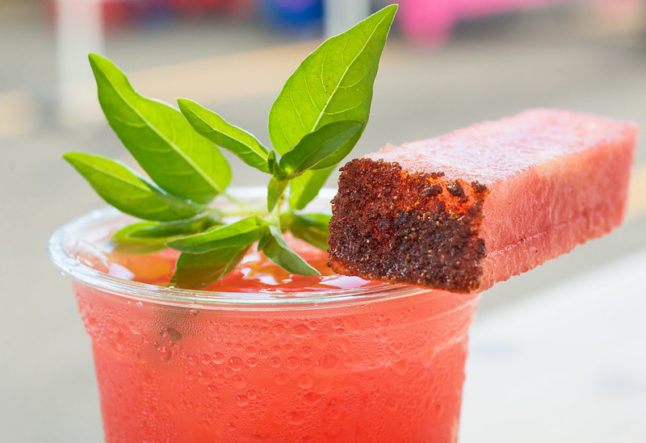
Photo credit: USDA / Flickr / Public domain
Hibiscus
Despite their tropical reputation, varieties of hibiscus can be found natively in all 48 contiguous states and Hawaii. These brightly-colored flowers with prominent pistils can be infused into water, or brewed into a refreshing fruity tea that’s common in Jamaica.
Looking for something to sip at happy hour? Try mixing hibiscus syrup with tequila or bourbon for a delicious summer cocktail!
USDA Hardiness Zones: 5-11
Sun: Full sun
Soil: Moist, well-drained soils
Water needs: 1-2 inches of water per week
Bloom time: Mid-late summer
Mature size: 3-7 feet tall
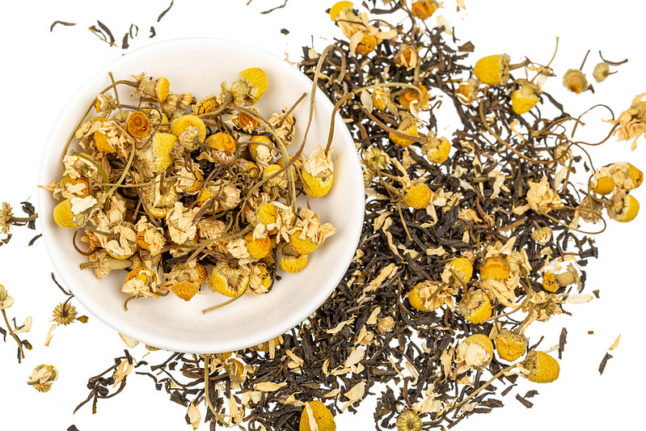
Marco Verch Professional Photographer / Flickr / CC BY-SA 2.0
Chamomile
Many swear by the soothing benefits of chamomile tea, but did you know that you can grow chamomile yourself? The flowers and leaves of these lovely little herbs can be brewed into tea fresh or dried, and have also been used in skin care and herbal remedies.
USDA Hardiness Zones: 3-9
Sun: Full sun to partial shade
Soil: Sandy, well-drained soil
Water needs: Needs about an inch of water per week when young, but fairly drought-tolerant once established
Bloom time: June-October
Mature size: 8-24 inches tall
A Garden That’s Good Enough to Eat
There are plenty of benefits to edible landscaping – it’s good for your wallet, creates unique and delicious dishes, and it’s also pure fun. Whether you’re dipping your toes in or going off-grid, there are plenty of edible species you can grow right at home.
And now, with this article, you can serve up a complete four-course meal from your edible garden.
While we’ve compiled this list of edible garden flowers, you may want a little extra help in designing your foodscape. Contact a local landscaper or gardening expert for personalized assistance in creating the edible landscape of your dreams.
Main Photo Credit: Pexels